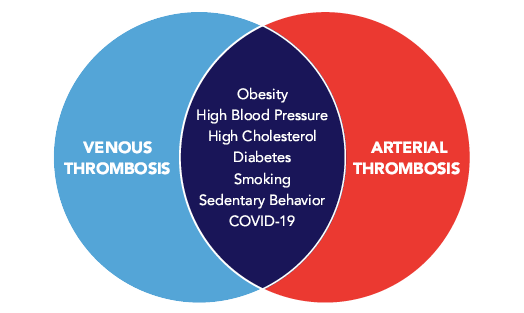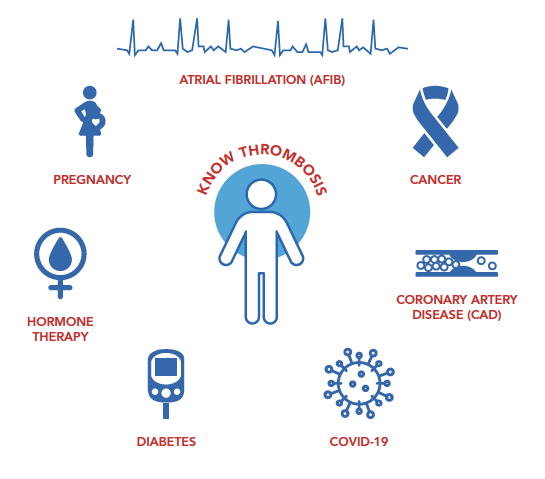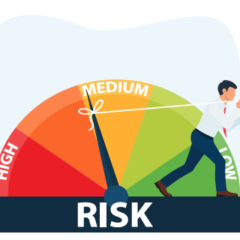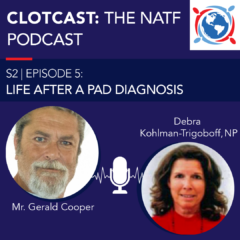Published on
Unpacking NATF’s Mission Statement: What is a “Related Disease”?
NATF’s mission is to improve the lives of those affected by blood clots and related diseases. But what do we mean by “related diseases” and why focus on these issues?
“Many common diseases can cause blood clots, which can be life-threatening or result in irreversible harm to our bodies. NATF therefore supports broad educational measures to address a wide range of conditions, including coronary artery disease (CAD), atrial fibrillation (Afib), diabetes, and cancer, to name a few,” said Dr. Christian Ruff, Chair of the NATF Medical Advisory Board and member of the NATF Board of Directors.
To better understand the connection between blood clots and these related diseases, it’s important to know that there are two classifications of thrombosis: arterial and venous.
- Arterial thrombosis refers to a blood clot that blocks an artery. Arteries carry blood away from the heart to other parts of the body. Arterial blood clots can block blood flow to the heart and brain, often resulting in a heart attack or stroke.
- Venous thrombosis, also known as venous thromboembolism or VTE, refers to a blood clot in a vein. Veins carry blood to the heart from other parts of the body. VTE includes deep vein thrombosis (DVT) and pulmonary embolism (PE).

Evolving science has helped us recognize some important links between VTE and arterial events like heart attack and stroke. In the early 2000s, one study found that plaque (fatty deposits) in the head and neck arteries doubled the risk of VTE. Later studies also found that patients with a history of VTE had increased risks for both heart attack and stroke versus patients without a history of VTE. These findings provided key jumping-off points for more research into the connections between VTE and acute coronary syndromes (conditions characterized by reduced blood flow to the heart).
We now know that VTE and arterial thrombosis share several risk factors, including obesity, high blood pressure, high cholesterol, diabetes, smoking, sedentary behavior and COVID-19. In other words, all of these conditions increase a person’s risk of heart attack, stroke, and DVT/PE – which is why NATF’s educational efforts often focus on lifestyle topics like cholesterol management, heart-healthy nutrition, exercise, and managing inflammation.
Cancer and Afib are additional conditions that warrant our attention. “Cancer is a very strong risk factor for developing a clot. If you consider everyone with a blood clot today, roughly 20% of those people have cancer,” says Dr. Jean Connors, the Medical Director of the Anticoagulation Management Service at Brigham and Women’s Hospital and Dana-Farber Cancer Institute. Certain types of cancers are more associated with clots, such as pancreatic and stomach cancer. Some chemotherapy and radiation treatments also increase the risk of blood clots.
Afib occurs when the electrical impulses that power the heart are uneven, causing the heart to beat irregularly. Patients with Afib are at risk of developing blood clots in the heart, which can lead to ischemic stroke (a stroke caused by a clot blocking blood flow to the brain). About 15% of strokes can be attributed to Afib – but the good news is that 80% of all Afib-related strokes can be prevented with the use of blood thinners.
Finally, there’s strong evidence that pregnancy and the use of birth control pills or other hormone therapies increase a woman’s risk of having a blood clot. “Estrogen itself increases the risk for blood clots. If you look at a woman’s lifetime risk for thrombosis, it goes up at puberty and stays up until a woman goes through menopause,” says Dr. Gregory Piazza, NATF’s Chair of Healthcare Provider Education. Estrogen use has also been associated with increased VTE risk in transgender women, but the data is less clear on the risk in transgender men taking testosterone.
With knowledge comes power, and that’s why NATF is expanding its educational scope beyond DVT and PE alone.

REFERENCES
Piazza G., Goldhaber SZ. Circulation.
Khorana A., et al. The Oncologist.
Thrombosis.org: What is Atrial Fibrillation?
Thrombosis.org: Birth Control – What You Need to Know
*Originally published in The Beat – April 2022. Read the full newsletter here.



